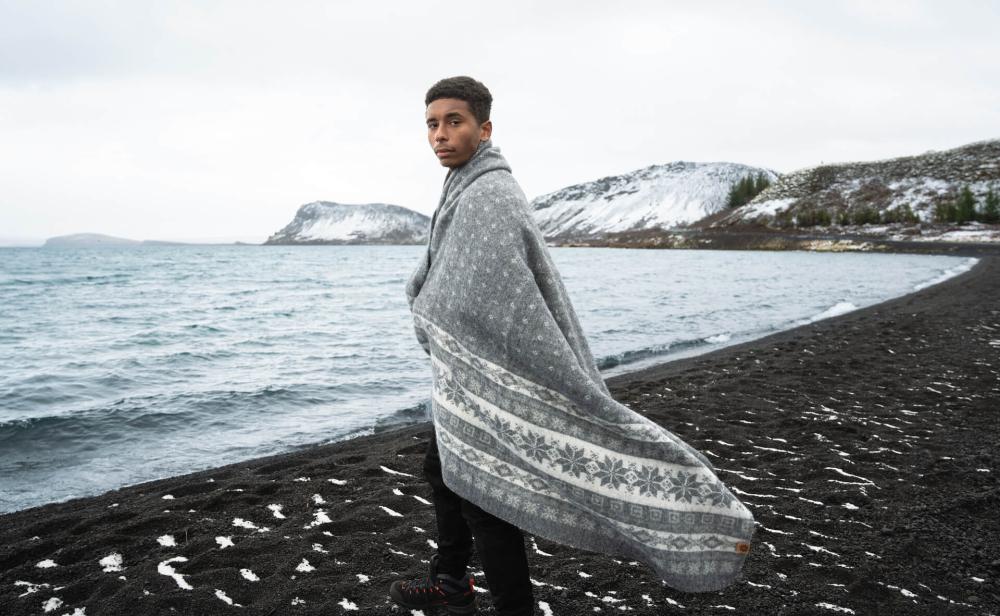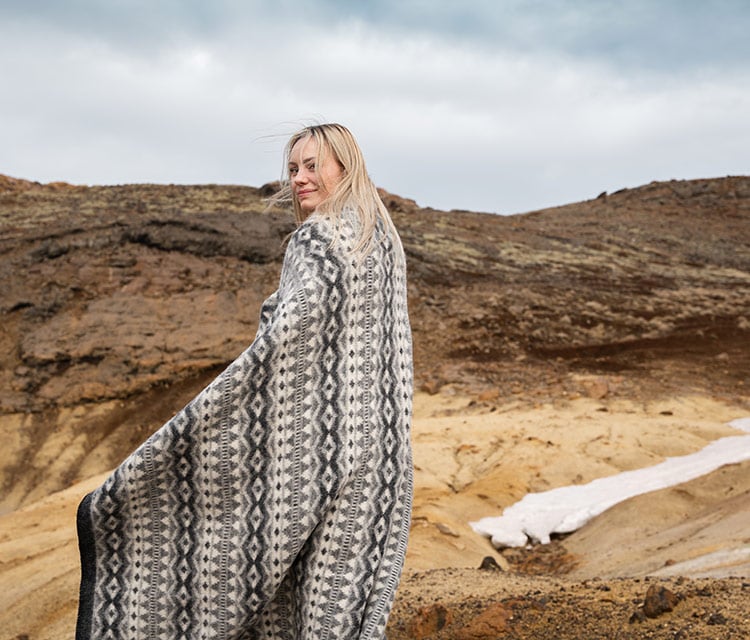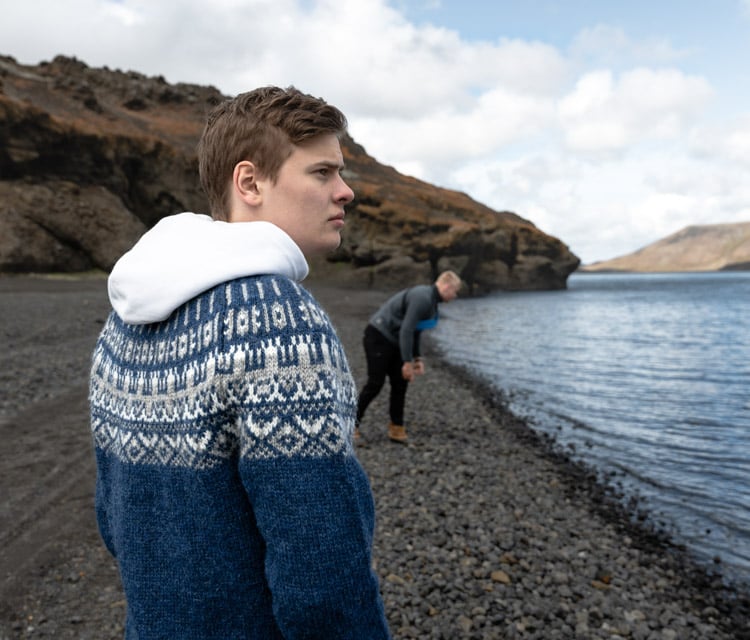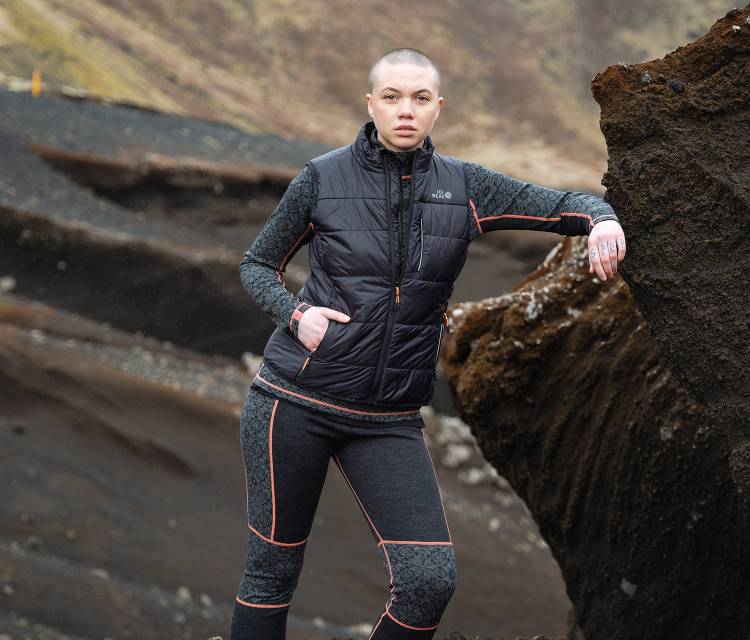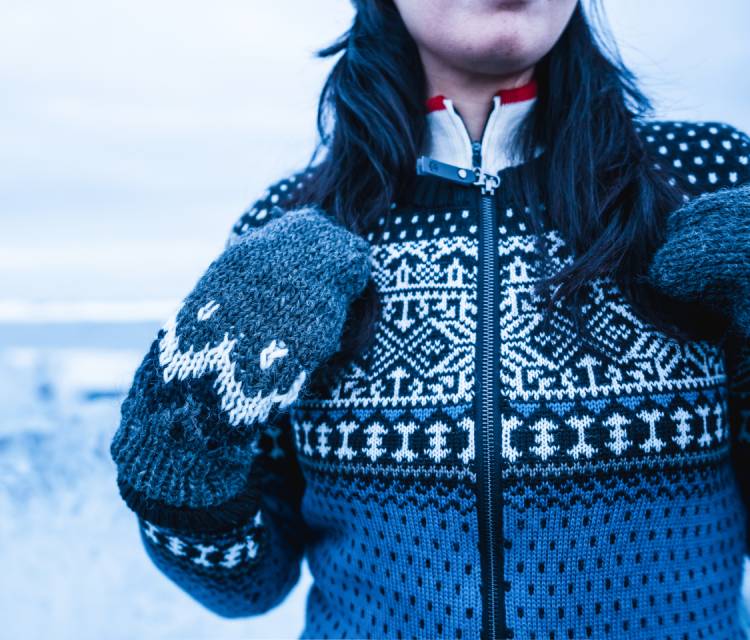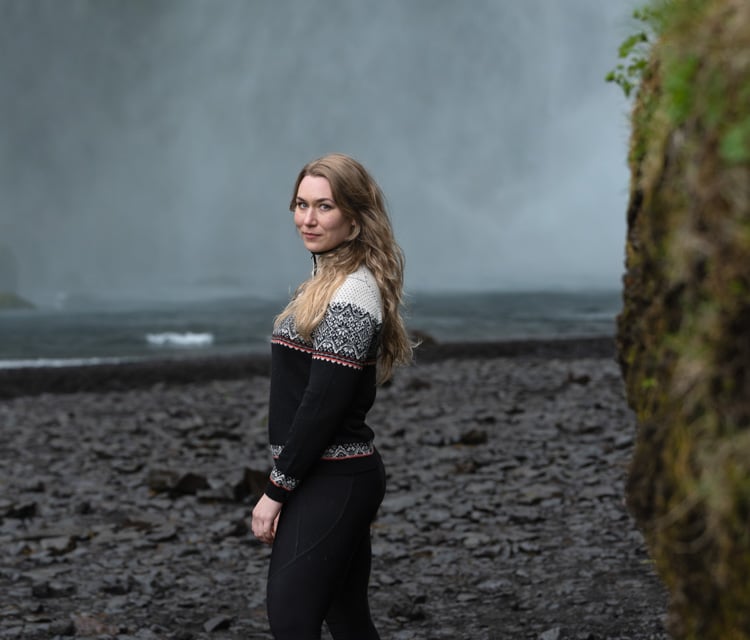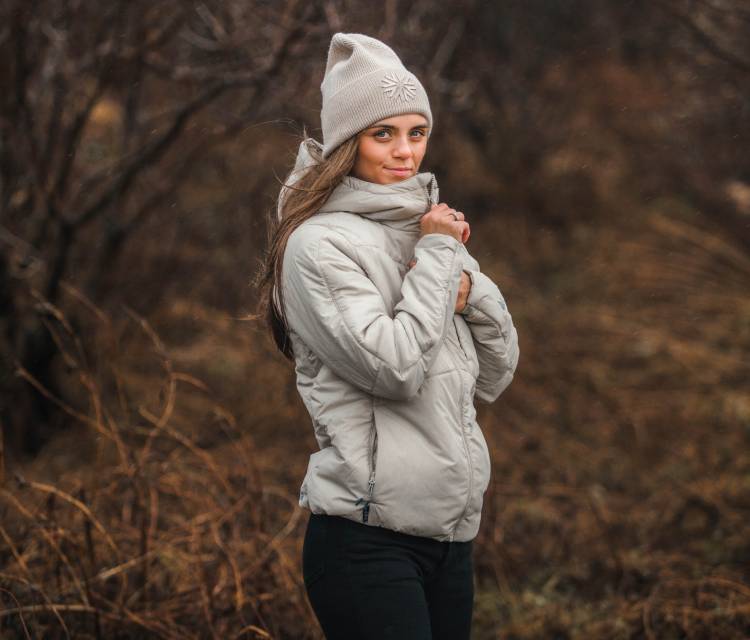CONTENTS:
Factors to Consider
Technical Specifications for Hiking Blankets
What a layered sleeping system includes
Practical Tips for Hiking Sleep Systems and Camping Blankets
Types of Camping Blankets
Puffy blankets
Down-insulated camping blankets
Woven wool blankets
Synthetic camping blankets
Washable Camping Blankets (and How to Wash Them)
Camping Blanket Sizes and Patterns
Sources
Key findings for camping blankets:
- In the same way what you wear on the trail impacts how comfortable you are on a hike, your choice of camping blanket impacts whether you feel rested or tired and cold when you wake up on the camping site.
- A hiking blanket forms part of a larger sleeping system for camping (including camping blankets, sleeping pads, sleeping bags, a pillow, and the storage system you use to pack and carry it all).
- R-value in camping blankets and mattresses measures the thermal (warmth) value of the product's insulation. The higher the r-rating, the warmer the blanket or mattress will keep you.
- There are different types of camping blankets to consider based on r-value, season, quality, and maintenance. Look at all the technical specifications on blankets as you shop. Start with the r-value, then look to see whether it’s machine washable. What other features does it have? How large is it? Do you like the feel of its weight?
- Camping blankets can be doubled and folded and tucked around you no matter how big they get. The primary consideration around blanket size is the weight of the blanket.
Factors to Consider
In the same way what you wear on the trail impacts how comfortable you are on a hike, your choice of camping blanket impacts how well you sleep. Then, each morning that you wake up on the campsite, you either feel rested or tired and cold. The sleep you get on any outdoor adventure is crucial to enjoy the experience.
Now, with the education you’ll find right in this article, you can make an informed decision on the best camping blanket for your next trip. Consider factors like:
- Blanket weight and other technical specifications
- The size of different camping blankets
- Types of blanket fill and material
- The wash and care requirements
A camping blanket is usually made with a soft fill and a waterproof shell. It forms part of a larger backpacking sleep system. Get ready to take on the next hiking trip knowing you can get the best sleep at night.
Technical Specifications for Hiking Blankets
The type of hiking or camping trip you’re planning will determine the sort of camping blanket you need. For example, if you’re hiking long hours across technical terrain, lightweight camping blankets can save you from carrying too much weight. The season you hike in will also determine how warm you want your camping blanket to be.
A hiking blanket forms part of a larger sleeping system for camping. This includes everything you need to sleep other than a tent. Think about camping blankets, sleeping pads, sleeping bags, a pillow, and the storage system you use to pack and carry them. Some of these items aren’t strictly necessary every time, like the pad and pillow. Some campers even forego the system altogether and choose a wilderness hammock. Again, it depends on the kind of trip and the season you’re hiking in.
If you do need a hiking blanket, shop using the “r-rating” or “r-value.” Blankets and mattresses have this rating system to describe the product’s warmth and loftiness. R-value measures the thermal (warmth) value of insulation. The higher the r-rating, the warmer the blanket or mattress will keep you. Mattresses have the r-value, too, because the cold can reach you from the hard ground you sleep on.
In general, this is the r-value to favor for different seasons and climates:
- In summer (or in climates over 40°F at night), look for r-ratings of R1
- In climates between 10 and 35°F at night, look for r-ratings of R2-R4
- In winter (or in climates under 10°F at night), look for r-ratings of R4-R6
For wintertime hiking and trekking, build a layered sleeping system to ensure you stay warm enough at night. Layering your sleep system also means your hiking blanket, mattress and other materials will be more versatile for other seasons—just leave certain layers at home when it’s warmer.
A layered sleeping system includes:
- Insulation foam on the ground
- Foil on top of that
- The mattress
- The sleeping bag
- A liner
- Whatever clothes you sleep in (including hats and wool socks)
- Your hiking blanket on top
Wool socks and woolen bedding, including warm wool throws or even wool insulated quilts, provide the greatest temperature regulation in the outdoors. Wool has natural breathability that lets your body’s heat out when you’re warm enough, and locks it in when it’s colder out. When families travel by camper, car or trailer, wool blankets are easy to haul and are particularly beneficial by the campfire, for two reasons:
- Wool blankets and throws carry the heat from the fire to the bed when it’s time to turn in.
- Wool blankets are also the safer option near the open fire (compared to flammable polyester).
Practical Tips for Hiking Sleep Systems and Camping Blankets
There’s no shortage of modifications and tips to make your next outdoor adventure more comfortable and convenient. Many of the products in a layered sleeping system include features you probably didn’t know they have.
For instance, try these tips on your next hiking expedition and see what a big difference they make:
- You can shorten your sleeping bag to fit your height, because extra space at the feet takes more time to warm up. To keep feet extra warm, find a pair of 100% wool socks to sleep in for optimal temperature regulation. Warm sleeping clothes are a must.
- When you keep things in the tent, you can even keep them inside your sleeping bag to prevent them from freezing. This is helpful for water bottles and even to keep shoes from getting too cold. You can double up and place items inside a plastic bag and then inside your sleeping bag, too.
- Tempting though it is to skip bringing the mattress pump since you can fill a mattress by blowing into it, the moisture in your breath will build and mold can grow. Bring a small, lightweight pump and save yourself the breath of filling the mattress yourself.
- Other ways to warm up before turning in include eating before going to bed (to keep your digestive system generating heat), leaving warm water bottles in your bag, and adding heating patches to especially cold areas.
- A foam pad under your sleeping system makes a huge difference when keeping your sleeping system warm. Elevating your system even a foot off the ground is a gamechanger. The ground is colder than you think!
- Make sure the zippers of your tent and sleeping bag are high-quality or air will seep through. The windows or vents of your tent shouldn’t be low to the ground, either, or cold air will blow over where you sleep. Choose your tent wisely if you’ll be hiking in cold weather.
- You want to feel protected by your sleeping system, not like it’s a drag to lug it around. Look for a quality “stuff sack” or a compression sack to ensure your camping blanket and sleep system are easy to transport day after day.
- When electing a sleeping bag, learn what each product’s temperature gradations are. Sleeping bags don’t have a measurement as specific as r-value like blankets and mattresses do, but they will be listed as “comfort,” “lower limit,” and “extreme range.” This scale gets progressively thicker and heavier to protect you from increasingly extreme cold.
Types of Camping Blankets
There are different types of camping blankets to consider based on r-value, season, quality, and maintenance.
So, which do you choose?
Whichever brand and weight you go for, the outer shell of hiking blankets will be slick and water-resistant. This keeps hiking blankets light and helps block out the cold from permeating through.
Look at all the technical specifications on blankets as you shop. Start with the r-value, then look to see whether it’s machine washable. What other features does it have? How large is it? Do you like the feel of its weight?
In general:
- Puffy blankets aren’t as warm as other options, but they’re durable and extremely packable. They come in fun colors, too.
- Down-insulated camping blankets are more of an investment, but they’re warmer and they last. Down is also highly compressible.
- Woven wool blankets are heavier, which means you have more weight to haul while you hike. However, the crimp and fibers of wool knit provides natural benefits like versatile temperature regulation and anti-bacterial qualities. They’re also easy to haul if traveling in a family or by camper.
- Synthetic camping blankets offer the greatest variety of prints and are economical, but their quality and warmth are much lower.
Washable Camping Blankets (and How to Wash Them)
The materials a camping blanket is made of will determine its wash instructions. Almost all camping blankets are machine washable, but the time and instructions to dry them differ. It’s the drying process that comes into play when considering which is best for your plans or lifestyle.
- Puffy blankets are usually machine washable, but their surface is so slick that they can be wiped down instead of washed every time. This makes them practical for especially long treks.
- Synthetic blankets are also machine washable, but it’s important to check the care instructions because some materials are damaged in warm water washes.
- Down-insulated hiking blankets can be washed on a gentle cycle, but anything too hot or vigorous can strip the down. Use a double rinse cycle to ensure all the soap is removed. After that, down blankets have to air dry, but they dry quickly. Because down-filled blankets are fairly large, they might not fit into some washing machines. If in doubt, take it to the dry cleaners.
- Wool camping blankets are machine washable with a wool-safe detergent (usually any product for delicate materials). Wool can stretch, so it’s laid flat to dry.
Camping Blanket Sizes and Patterns
Is there an optimal size for a camping blanket? Unlike sleeping bags that should be hemmed to your body length, camping blankets can be doubled and folded and tucked around you no matter how big they get. The primary consideration around blanket size is the weight of the blanket. If you’re trekking across technical terrain for days, you’ll want the smallest hiking blanket that provides the warmth you need. Then, you’ll carry the least amount of weight possible.
The size of camping blankets can also refer to its thickness or, if it’s a filled blanket, its insulation. The thicker the blanket or the more insulation, the warmer it will be, but it will be considerably bulkier. If you’re camping in cold weather, the thicker and insulated options will provide greater r-value and optimal comfort.
A final fun consideration when shopping for hiking blankets is its pattern or design. For example, you can look for herringbone patterns if you’re a fan. Or perhaps a solid color is what you want. Thick wool blankets also might provide traditional Scandinavian or Icelandic designs, like the woven wool blankets that Icewear offers. Icelandic wool blankets made with 100% Icelandic wool offer the same benefits Icelandic sheep enjoy after more than 1,000 years of isolation on the island. Their wool has two layers (one soft, one water-repellant) with special qualities to regulate temperature.
Sleep is essential, especially on a trek that requires a lot of you physically and mentally. When it’s time for bed, everyone has their preferences and needs. Your hiking sleep system will be subjective to your needs, so knowing the different layers and your options in camping blankets is where to start. Sleeping in the great outdoors has a special magic about it, and when you’re comfortable and warm you’ll enjoy that magic in a deep way.
Sources
- https://www.youtube.com/watch?v=aB5e6A3vA5o
- https://www.pariaoutdoorproducts.com/blogs/affordable-backpacking-gear-blog/sleeping-outside-a-guide-to-backpacking-sleep-systems
- https://www.switchbacktravel.com/best-camping-blankets
- https://www.icewear.is/us/blog/2020/02/07/are-these-icelandic-reykjavik-wool-blankets-really-that-warm/
- http://www.icewear.is/us/wool-blankets

